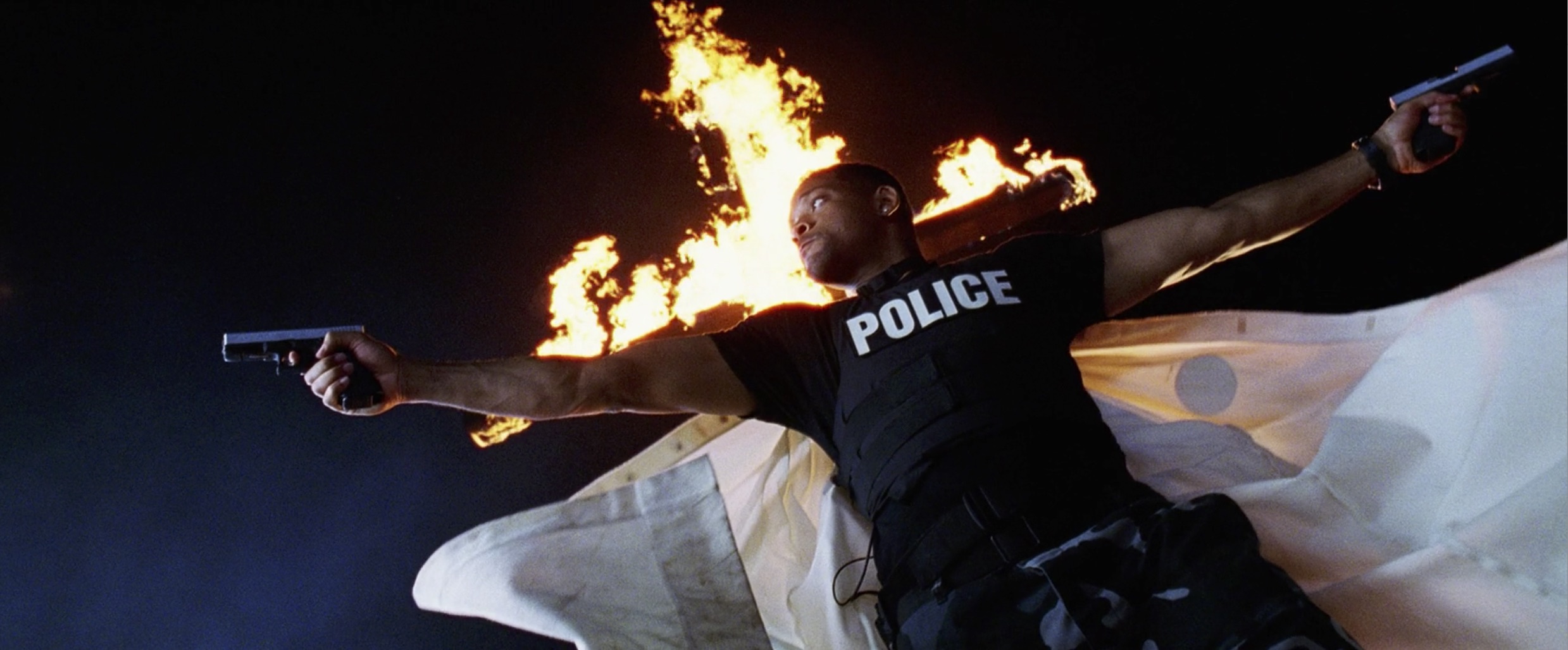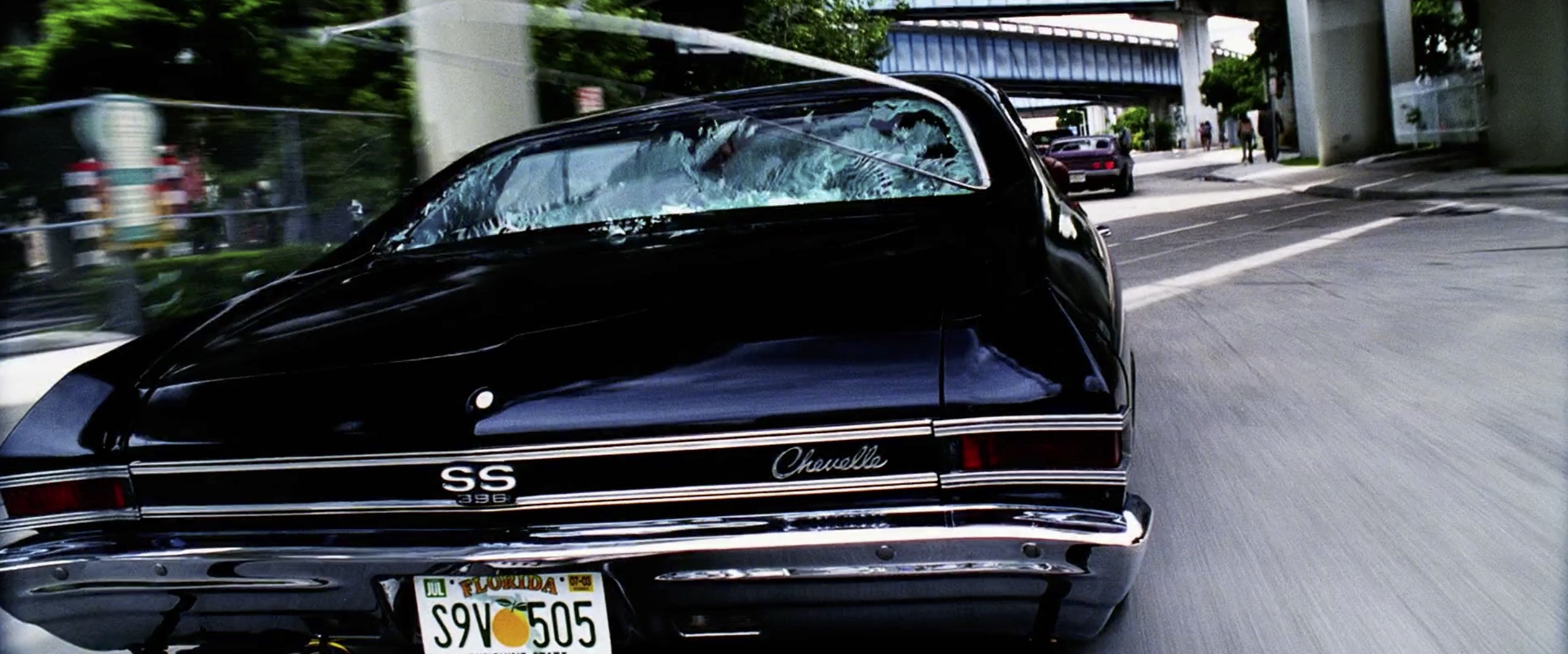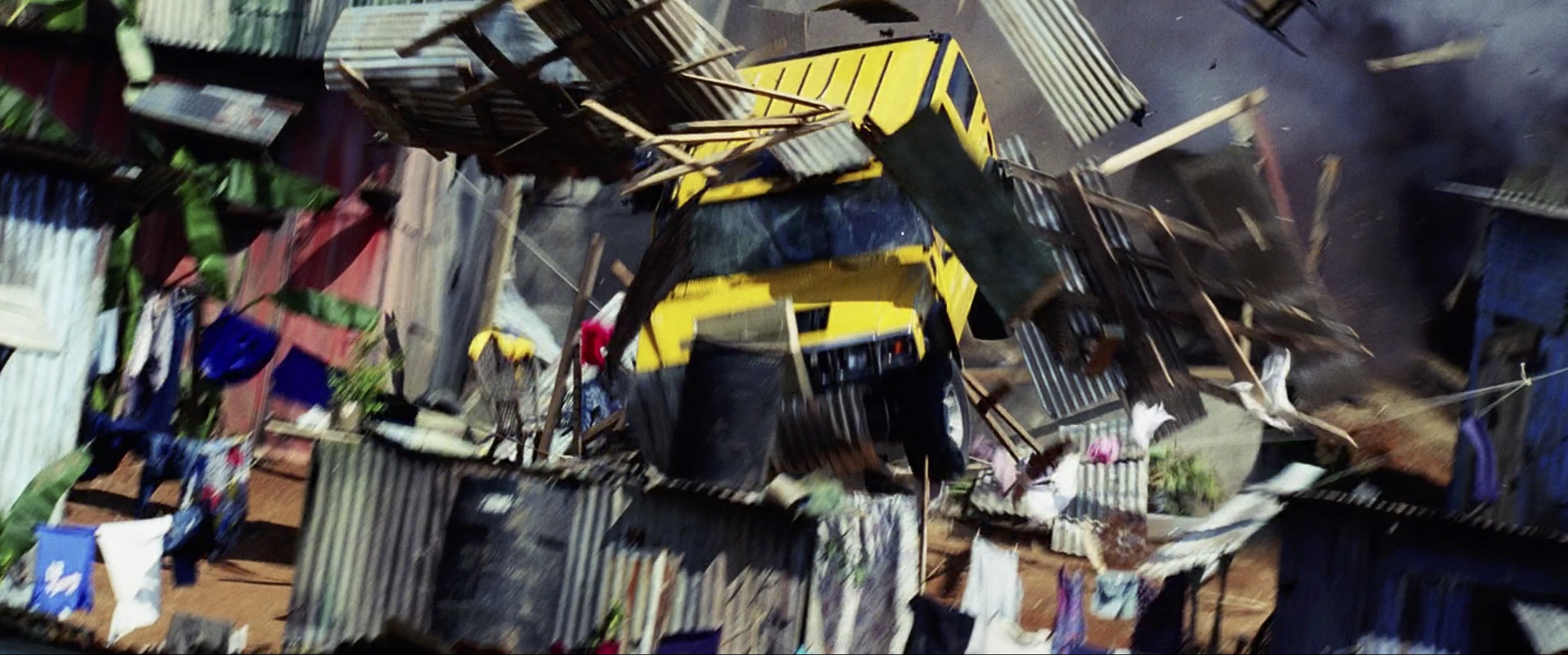Bad Boys II and its car chases are over the top and totally irresistible
Klansmen chant at a KKK rally. A shipment of ecstasy is delivered. Cue Martin Lawrence and Will Smith.
In one of the most satisfying moments in cinematic history, Smith throws off a white robe to reveal a Miami P.D. vest, guns in hand, his arms outstretched to mirror the flaming cross behind him. He announces: “Blue power, motherf*****s,” and Smith and Lawrence start singing Inner Circle’s Bad Boys.
A klansman puts a gun to Lawrence’s head. The banter continues, and then the shooting begins. Something explodes, and klansmen sail through the air. Smith leaps sideways in slow motion, both guns firing, killing a klansman and accidentally shooting Lawrence in the rear end. Lawrence squeals and grimaces in pain, also in slow motion. This scene encapsulates Michael Bay’s 2003 Bad Boys II: ridiculous, over the top, tasteless, and totally irresistible. And the movie’s four car chases are not immune to any of it.

Bad Boys II embodies excess. Every frame is stuffed to the brim, and the colors are so saturated and intense that the film looks radioactive. This is possibly the most Miami movie ever made. In Bad Boys II, Miami cops Mike Lowrey (Smith) and Marcus Burnett (Lawrence) are looking for the biggest shipment of ecstasy ever to come out of Amsterdam, along with the man behind it: Cuban drug lord Johnny Tapia (Jordi Mollà). Tapia’s mortuary business is a front for his criminal enterprise, and he uses corpses to smuggle drugs and money in and out of the country. The stakes: Lowrey and Burnett’s partnership, in a pale imitation of Lethal Weapon’s Riggs-and-Murtaugh dynamic, is in jeopardy, and Burnett’s sister, undercover DEA agent Syd (Gabrielle Union), finds herself in trouble with the drug dealers they’re investigating.
The first car chase in Bad Boys II is a baroque, a nearly 15-minute-long sequence involving countless cars, cops, and civilians. Syd’s just left a meeting with Alexei (Peter Stormare), a nightclub owner and self-described “Russian Grim Reaper,” whose money she’ll be laundering. DEA agents are there to observe, and so are Lowrey and Burnett, who’ve been tipped off that the Haitian Zoepounders gang is going to make a move.
The Zoepounders may be pirates, but they have great rides: a 1967 Pontiac Firebird, an orange Chevy II Nova SS (the hero car is a ’68, the action car is a ’71), and a 1979 Pontiac Firebird Trans Am. Syd’s driving a 2003 GMC Yukon Denali with Zoepounders, DEA agents, and Lowrey and Burnett in pursuit. Rather than having our heros drive something as banal as a police car, Bay puts them in Lowrey’s personal car, a role played by two Ferraris: a Maranello 575M and Bay’s own Maranello 550.


The chase is put on hold when Syd speeds through an intersection, causing a pileup that precipitates a shootout between the cops and the Zoepounders. Most of the Zoepounders are killed and their rides destroyed, so one of the remaining gang members commandeers an open car-transport truck. He takes the chase to the MacArthur Causeway, where chaos reigns. As the transport truck menaces Syd’s GMC, it briefly feels like Duel. Mike keeps an upbeat running commentary as the Zoepounders literally catapult unchained cars from the transport: “These dudes is off the chain!” One car flips endlessly down the middle of the causeway. Another steamrolls a taxi cab. Stunt cars with cameras attached crash into cars falling from the truck to maximize impact. A speedboat hurtles down the freeway, colliding with a cop car and exploding in the middle of traffic. Syd still manages to make her cash drop for Alexei, and she, Marcus, and Mike somehow all emerge unscathed.
Lowrey and Burnett’s captain informs the two that, thankfully and unbelievably, no cops died during the chase, although there’s no word on the civilian body count, and there was plenty of breathtaking car carnage. While this chase would represent any other film’s climax, Bay is just getting started. Three more chases, minimalist in comparison, follow. In the second chase, Lowrey and Burnett pursue one of Tapia’s mortuary vehicles. In a brief and surreal scene, Mike tries to commandeer a car from Bay himself, then claims a 2003 Cadillac CTS instead from a salesman who’s showing the car to NFL Hall of Famer Dan Marino. Lowrey and Burnett then stick Michael Shannon, who plays their unwilling informant, into the Cadillac’s trunk.

In this chase, cars don’t fly down the street, cadavers do. Frozen corpses shoot out of the mortuary transport, and they get stuck to the windshield, or decapitated, or driven over like a speed bump. In this film, there is no real regard for human life or death. Lowrey drives the wrong way down the street and he jumps the train track, echoing To Live and Die in L.A. Then he crashes the car into an office building, where the chase becomes a gunfight, and then a foot chase. It culminates on the monorail in a fight between Lowrey and one of Tapia’s goons. But the goon falls and dies, which is played like a weird punchline. Burnett complains that Lowrey barbecued their only lead and that this has been the most emotional cop week of his life.
The film’s third chase involves police helicopters in pursuit of speedboats, which is brief but still Bay-level bonkers. It’s a righteous bust. Lowrey and Burnett are vindicated, their suspicions about illicit money and drugs being stashed in corpses confirmed. This could be the end of the film, but it isn’t: the partners find out that Syd, her cover blown, has been kidnapped by Tapia and taken to Cuba. Cue Bay’s infamous low-angle 360-degree shot of Lowrey and Burnett standing beside each other. Burnette declares, “Sh** just got real.” The partners remind each other that they ride together and they die together. But these bad boys don’t have jurisdiction in Cuba, so they go rogue… and their fellow officers join them… as does the CIA, for some reason.
And this is when it gets really wild. To infiltrate Johnny’s mansion in Cuba, the CIA and Miami cops use cats and iguanas to throw off his motion detectors, then tunnel under Tapia’s backyard and blow it up, even though there was probably an easier way. They rescue Syd just as the Cuban military shows up.



Lowrey commandeers a yellow 2003 Hummer H2 in the film’s fourth chase and drives through the rubble of Tapia’s now-demolished mansion, then through a town comprised of exploding shacks where drug dealers live and make cocaine, and then to Guantanamo Bay—of course—which is where the U.S. Navy opens fire on everyone. Tapia is gruesomely dispatched in a minefield, and then Syd and Mike kiss, much to Marcus’ chagrin. This is the Bay version of a fairytale ending.
The car chases in Bad Boys II seem to contain the DNA of all iconic chases that preceded them, which Bay imbues with his characteristic chaos and finishes off with a Tony Scott polish. Bad Boys II is a heightened, overwhelming experience, and it boasts one of the biggest car chases ever conceived. But restraint can be a virtue, and maybe you can have too much of a good thing. A car chase loses tension when there’s too much happening. The chase needs room to breathe, or else the impact of its stunts is diminished, and it all becomes noise. A lot of noise.
But what these chases lose in suspense and plausibility, they make up for in audacity and bombast and sick pyrotechnics. It’s pure, total unabashed fun. And the cars are fantastic. Smith and Lawrence deserve awards for heroically carrying this film with their charisma and chemistry—they are eminently, endlessly quotable. After the film’s first car chase, the police captain asks Lowrey and Burnett, “Tell me, gentlemen, what was subtle about your work today?” The same question could be asked of Bad Boys II. Maybe less is more. But as it stands, Bad Boys II is pure, absurd, hallucinatory spectacle.











